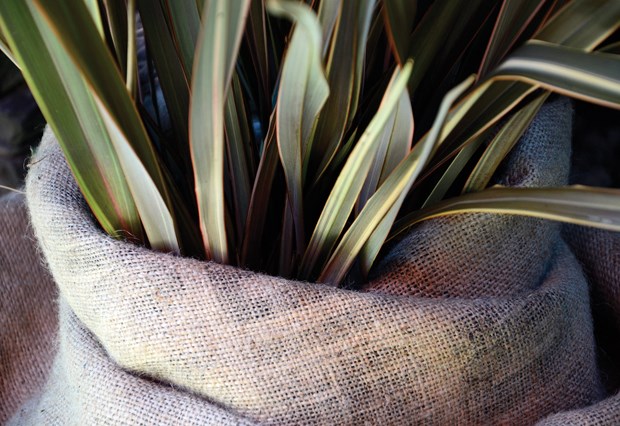There are many myths of the fall garden that continue to flourish in popular culture, even in this age of information.
Not ghosts and goblins but myths of phantom garden tasks that pervade gardening culture. It is important to expunge harmful gardening myths and highlight provocative marketing. So to help everyone separate fact from fiction, here's part of my fall gardening myth maintenance list.
Myth: Fall is a good time to feed the lawn.
Fact: Excessive use of chemical fertilizers is becoming a major problem for the rivers and oceans of the world. There is plenty of science out there showing that chemical fertilizers readily leach from soils in agricultural and residential lands. The leaching nitrogen, phosphorus and potassium end up in the ocean where they facilitate the growth of oxygen-depriving algae which in turn harms life in the ocean. Before you feel the need to feed the lawn, ask yourself the following questions. Is my lawn in poor health? Is the grass yellow or pale? Is the grass growing poorly? Do I have bare patches that are not related to the shade of trees? If you answered no to those questions then you do not need to fertilize.
Myth: Rainfall causes soil acidity and therefore lawns should be limed in fall.
Fact: Before applying anything to the lawn you must know if your lawn's pH is low or even needs adjustment. Even experts have trouble diagnosing soil pH visually. And sticking your tongue in the ground and taste testing the soil is
best left to a Jedi master. Science says test your soil's pH before you lime. Without a proper pH testing there is no accurate way to know if the soil's pH needs adjustment with lime. Liming on a schedule is a waste of time and money but it is good marketing. And while it is true that rainfall generally leaches the soil and lowers pH, acidification takes years to occur, not months, and acidification takes much longer on healthy managed soils, like those in residential gardens and lawns.
Myth: It's time to protect my tender plants for winter.
Fact: While that is true, it is too early here on the west coast to start wrapping up tender plants. Cool temperatures and some light frost are helpful for "toning" or acclimatizing tender plants for winter. October is also one of the most beautiful months in the garden so enjoy the colours of fall. Bring in potted tender plants soon, but tender plants growing in the ground can wait a little longer before they are wrapped and covered for winter, depending on your home's elevation above sea level.
Myth: Trees and hedges should be pruned before winter to prevent snow damage.
Fact: Fall is not the time to start pruning any plant without a good reason. There are two primary pruning seasons for all trees, shrubs and woody vines; dormant season pruning (December, January and February) and active season pruning (June, July and August). Purposeful results can be obtained by pruning in those seasons. The worst time of year to prune is in spring and fall when plants are predisposed to pest and disease attack and plants may suffer environmental stress, lack of flowering or adverse growth in the seasons following spring and fall.
Most importantly have a reason to prune. Pruning on a schedule is a waste of time and money but it is good marketing.
Myth: Fallen leaves are garbage.
Fact: Leaves provide vital food for the soil, its organisms and earthworms while protecting the soil from rain damage. But all too often leaves are treated as garbage or at best green waste. Adding more leaves to the municipal waste stream only increases our collective garbage costs. Leaves are useful for mulching the garden, whole or when shredded using the lawn mower.
Leaves can also be composted to produce leaf-mould which is highly nutrient rich and useful for mulching or amending soil. To all those who sweep, blow or otherwise dump leaves onto the street, boulevard or into forest land, please stop doing that. Be responsible for your own trees whether they are on your property or municipal property in front of your house. And don't cry that leaf pickup is the city's responsibility when you complain at the same time that property taxes are going up.
Blowing leaves onto the road or boulevard increases park maintenance costs and leaves plug storm drains causing localized flooding. Trees belong to everyone so share the work and the beauty.
Gardening in the fall can be exhilarating, good for our health and rewarding on many levels, particularly for our children. If you are not sure how to accomplish a specific fall gardening task, seek expert advice or do some research to find answers before you fall prey to myths or provocative marketing.
Todd Major is a journeyman horticulturist, garden designer and builder, teacher, skills trainer and organic advocate. For advice contact him at [email protected].



